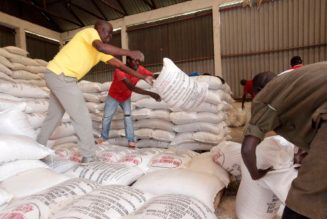Columnists
New CBK rate ripple effects to hand households a forgettable Christmas
Friday December 22 2023

The Central Bank of Kenya in Nairobi.
The recent hike of base lending rate by the Central Bank of Kenya through the Monetary Policy Committee (MPC) from 10.5 percent to 12.50 percent will have far-reaching implications, especially for everyday Kenyan citizens, small business owners, and micro, small, and medium enterprises (MSMEs) during this Christmas and New Year holiday season and beyond.
This increase in the MPC lending rate leads to higher interest rates for loans, affecting individuals and businesses dependent on borrowing for various purposes, such as home loans, business expansion, or daily operations. Inflation has paused at 6.8 percent, which is above the Central Bank of Kenya (CBK) preferred rate of 5.0 percent. This means households are not cutting back on the demand for goods and services despite high prices.
How are Kenyans financing consumption when taxes and borrowing are at an all-time high? In 2024, more financial challenges will follow in the consumption patterns of Kenyans with the repayment of Eurobond.
For MSMEs, this translates into higher operational costs, potentially increasing the prices of their goods and services, while ordinary citizens face more expensive personal or business loans.
Despite these high-interest rates, there has been notable growth in private sector loans, suggesting strong demand for borrowing, for business investment, or coping with rising costs of living. However, borrowing is likely to become costlier, which might slow down this growth.
High inflation erodes purchasing power, making everyday expenses for goods and services more expensive for the average Kenyan. The weak currency exacerbates this issue by making imports costlier and contributing to inflation.
While higher interest rates are expected to attract foreign investment and strengthen the currency, exchange rates are influenced by numerous complex factors beyond interest rate differentials.
An interesting problem arises from the observation that there has yet to be a significant decrease in consumption despite high taxes and borrowing rates.
This might indicate that Kenyans are finding alternative ways to finance their consumption, such as through savings or informal borrowing. Still, increased financial pressures could lead to reduced consumption over time, impacting businesses reliant on consumer spending.
The increased cost of capital will likely raise the cost of doing business, affecting profit margins and potentially leading to higher consumer prices. This scenario is particularly challenging for small businesses and entrepreneurs, who might need help to expand or maintain operations under these conditions.
The long-term economic impact of this policy aims to stabilize the economy by controlling inflation and stabilizing the currency. However, its immediate effect could be a contraction in economic activities. The eventual adjustment and return to economic equilibrium depend on various factors, including global economic conditions, internal economic policies, and the response of businesses and consumers to these changes.
Additionally, concerns about Eurobond payments reflect the challenges in managing the country’s debt obligations, as higher interest rates could increase the cost of debt servicing for the government, potentially leading to more stringent fiscal policies that could affect public spending and investment.
Ultimately, these monetary policy changes in Kenya carry significant implications for the everyday lives of Kenyans, impacting the cost of borrowing, business operations, and the overall cost of living. While aiming for long-term economic stability, these changes pose substantial short-term challenges, particularly for small businesses and average Kenyans struggling for survival.
The writer is a lecturer at Meru University of Science and Technology (MUST) and a Post-Doctoral Researcher at Umeå University, Sweden.
X: @Dr_Jodhiambo









